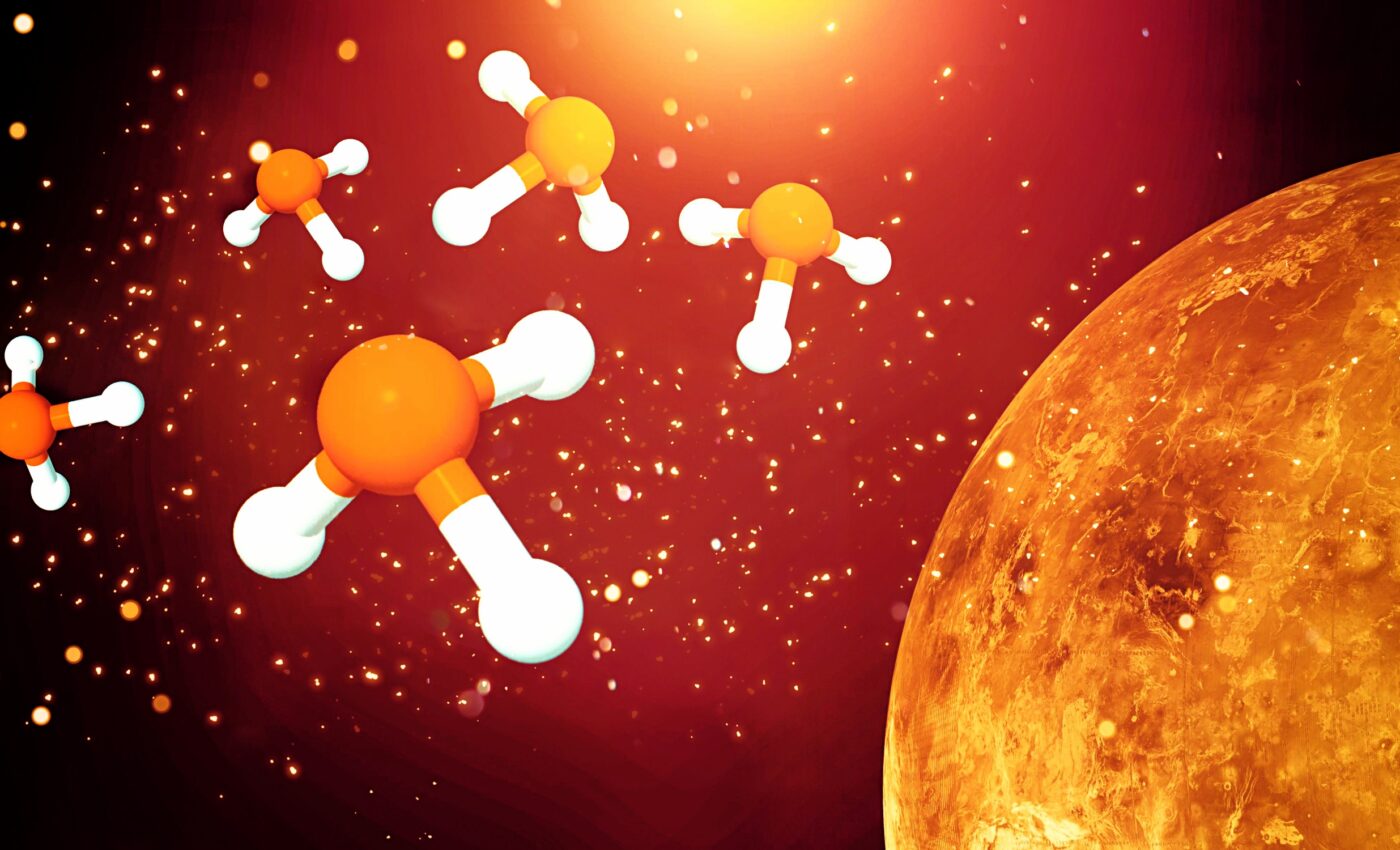
Venus' environment could support certain types of life
A new study from the Massachusetts Institute of Technology (MIT) is forcing us to rethink just how unlikely life on Venus might be. The researchers discovered that some of the core building blocks of life on Earth are surprisingly stable when exposed to the corrosive sulfuric acid found in Venus’s atmospheric clouds.
Until recently, most scientists wouldn’t have given the notion of life on Venus a second thought. With surface temperatures hot enough to melt lead and a toxic atmosphere bursting with sulfuric acid, our neighbor Venus seems utterly inhospitable to any form of life we understand.
But could there be something living in those swirling, fiery clouds?
A new perspective on Venus
While the surface of Venus might be the closest analog to an inferno that we know of, conditions in the planet’s upper cloud layer are surprisingly temperate.
The challenge in imagining Venusian life is that its environment is so drastically different from Earth’s. Those floating cities of sulfuric acid would dissolve most familiar biological materials in minutes.
So, if life does exist on Venus, it must be very different from what we’re used to.
Amino acids and Venus
The MIT team looked specifically at amino acids. These tiny molecules are crucial for life on Earth because they link up to form proteins.
“If you consider the four major building blocks of life as nucleic acid bases, amino acids, fatty acids, and carbohydrates, we have demonstrated that some fatty acids can form micelles and vesicles in sulfuric acid, and the nucleic acid bases are stable in sulfuric acid,” said study co-author Maxwell Seager, an undergraduate at Worcester Polytechnic Institute (WPI).
“Carbohydrates have been shown to be highly reactive in sulfuric acid. That only left us with amino acids as the last major building block to study.”
Proteins provide essential structure and perform countless functions in everything from microscopic bacteria to the biggest animal on our planet. If there’s life out there, it almost certainly relies on proteins in some way.
Amino acids stability in sulfuric acid
The researchers dissolved 19 different amino acids – the types crucial for life on Earth – in sulfuric acid at concentrations matching the acidity in Venus’s clouds. Incredibly, the central structure of these amino acids remained stable for weeks under these incredibly harsh conditions.
“People have this perception that concentrated sulfuric acid is an extremely aggressive solvent that will chop everything to pieces,” said study co-author Janusz Petkowski, a research affiliate in MIT’s Department of Earth, Atmospheric and Planetary Sciences (EAPS). “But we are finding this is not necessarily true.”
“What is absolutely surprising is that concentrated sulfuric acid is not a solvent that is universally hostile to organic chemistry.”
Is there life on Venus?
This study doesn’t prove that life exists on Venus. We’re a long way from discovering little floating Venusian microbes. But, it’s a massive leap forward.
“Just showing that this backbone is stable in sulfuric acid doesn’t mean there is life on Venus,” noted Maxwell Seager. “But if we had shown that this backbone was compromised, then there would be no chance of life as we know it.”
“We are finding that building blocks of life on Earth are stable in sulfuric acid, and this is very intriguing for the idea of the possibility of life on Venus,” added study author Sara Seager, MIT’s Class of 1941 Professor.
It shows that the chemistry of Venus might not be as instantly destructive to organic molecules as we assumed. That opens the door to imagining the existence of life as we don’t yet understand it.
Moreover, it directs future research. Scientists now know that amino acids – vital to terrestrial life – warrant a closer look regarding Venus’s atmosphere. Future space probes and studies can build upon this knowledge.
Life on Venus: The quest goes on
The search for life on Venus is gaining serious momentum. This MIT study, alongside the controversial detection of phosphine in Venus’s atmosphere (another potential sign of life), has scientists around the world more curious about our neighbor than ever before.
“There are only a few groups in the world now that are working on chemistry in sulfuric acid, and they will all agree that no one has intuition,” added Sara Seager. “I think we are just more happy than anything that this latest result adds one more ‘yes’ for the possibility of life on Venus.”
Moreover, a privately-funded mission with MIT’s Professor Sara Seager as the lead scientist is scheduled to launch in 2025. This probe will journey through Venus’ clouds, analyzing the chemical makeup on its quest for signs of life.
Overall, it’s an astonishing, humbling, and exciting time to be alive as we reach towards a greater understanding of our place in the cosmos.
The study is published in the journal Astrobiology.
—–
Like what you read? Subscribe to our newsletter for engaging articles, exclusive content, and the latest updates.
Check us out on EarthSnap, a free app brought to you by Eric Ralls and Earth.com.
—–













